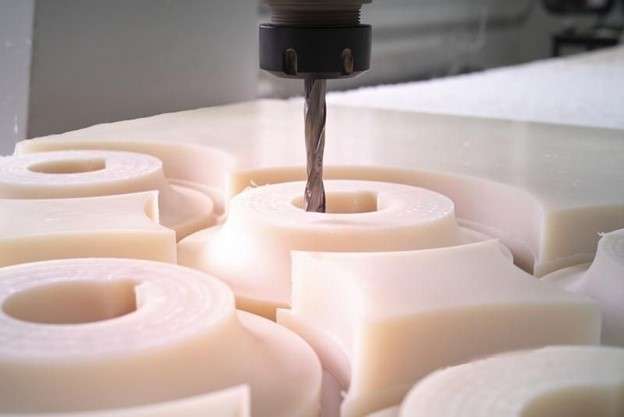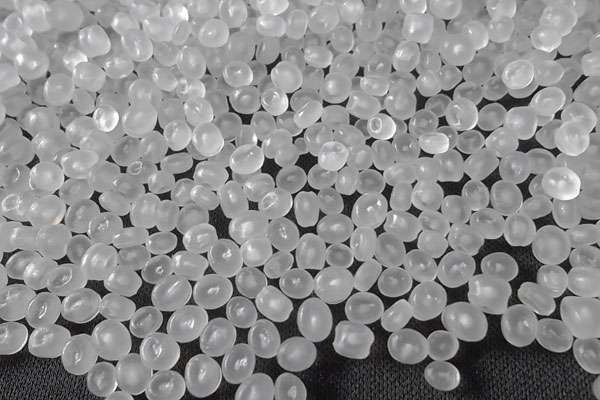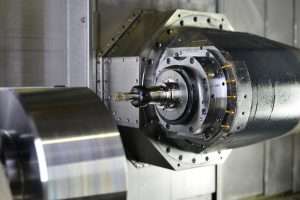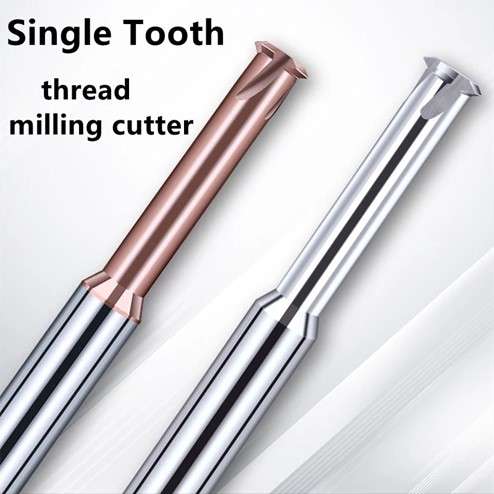
CNC Milling of thermoplastic
Polypropylene or PP is a widely used thermoplastic material across the globe. It has a plethora of applications, including plastic packaging, manufacturing plastic parts for machinery & equipment, and even fibers and textiles. On the other hand, polyurethane is becoming increasingly popular in industrial production due to its consistent properties. It is known for its strength while being relatively lightweight compared to other materials. Its chemical resistance against various substances and media makes it ideal for sealing machine components.
This review will discuss the main features of processing polyurethane on a CNC milling machine.
Polypropylene (PP) Machining Service At a Glance
| Compatibility | Applications | Tolerances | Thickness | Max Size | Strengths |
| CNC Mill CNC Lathe |
Food processing products, electrical equipment, and household appliances. | Not lower than ± 0.13 mm (±0.005″), based on the drawing ( ISO 2768) | Minimum 0.80 mm (0.03″), but this can change depending on the proportion of the wall thickness to the linear dimension | 200 x 80 x 100 cm | Good stiffness, impact resistance, and chemical stability with excellent wear resistance & elasticity. |

Polypropylene Granules
Polyurethane Processing: Mechanical Aspects
The popularity and “love” for this material are also explained by the fact that the material practically does not produce waste during milling, it is easy and without difficulty cut on the machine.
Moreover, comfortable cutting occurs even with manual processing, however, even greater accuracy can be achieved on a CNC milling machine, especially when it comes to mass production.
The only disadvantage of polyurethane is its temperature characteristics. In other words, this material can maintain its optimal physical properties at a temperature not exceeding eighty degrees. This creates some difficulties in milling.
In this case, machining is faced with the fact that during intensive cutting of the material, the chips begin to melt and stick to the milling knives, during the same process; the grooves for chip removal are clogged with adhering molten material.
Optimal Ratio of the Spindle Rotational Frequency

Spindle Rotational Frequency CNC Milling Machine
Many specialists find the solution to this problem in the optimal ratio of the spindle rotational frequency and tool feed. In other words, the specialist should choose the optimal mode of operation of the milling machine.
At high speeds of the milling cutters and not quite a large feed of the tool, the polyurethane begins to melt. Also, troubles arise if the machine is equipped with somewhat dull knives.
The best effect when processing polyurethane is guaranteed by the so-called “corn” – the informal and rather comic name for special cutters that are equipped with bristle tips.
Model Plastic Processing on a CNC Milling Machine
One of the varieties of our polyurethane is another interesting material – the so-called model plastic. In general, this material is in no way inferior in its properties to classic polyurethane. Its processing is also carried out quite easily, there are practically no chips, and its physical properties are at a high level – strong, hard, and wear-resistant.
The main scope of modeling plastic is the development of various model architectural structures, and design projects. This material has found such an application due to the fact that there are practically no various roughnesses on its surface, and the material itself is distinguished by the high dimensional accuracy of geometric shapes.
However, the design and architectural scope of modeling plastic is not the only possible one. This material is used not only to create models and layouts of future architectural structures, original design structures.
As we have already noted, modeling plastic lends itself to fairly simple and easy milling on a CNC mill. And therefore, after such processing with the help of modeling plastic, you can create various matrices, shapes, or so-called master models.
CNC Milling Machine Advantages
As for the production of matrices, here a CNC milling machine gives one undoubted advantage – it eliminates the multi-stage process, and the whole process is reduced only to processing on milling cutters. In other words, to create a matrix on a CNC milling machine, there is no need for casting afterward. If you are looking for CNC milling Service, you can always trust Prolean, equipped with a state-of-the-art facility and experienced team, we can handle all kinds of CNC milling projects.
The final processing of the material on the machine gives an excellent result: the surface can be processed with sandpaper, and the model plastic turns into an almost mirror-like material.
Dense Foam: Features of Material Milling
Dense foam plastic is very often used in various design and architectural solutions – the creation of various facade elements, panels, and artistic sculptures for private houses. Here are a few features of foam processing with a CNC milling machine:
- Processing can be carried out with great accuracy: the depth is from forty to sixty millimeters, and the accuracy of the milling itself is one millimeter;
- Due to its physical properties (lack of hardness), the foam is easy to mill;
- Under moderate cutting conditions, foam processing can be carried out even to a depth of up to seventy millimeters.
However, the processing of this material also has its own nuances, which are similar to polyurethane milling. Here, too, care must be taken when selecting cutters. Styrofoam must not be processed on a machine equipped with blunt knives.
After all, we have already managed to find out that the cutter, which has become dull from countless treatments, does not cut our material at all, but only begins to melt it.

single tooth thread milling cutter
Therefore, it will be relevant to use a single-thread end mill model for foam plastic. In the case of a double-start cutter, absolutely uneven wear of the teeth occurs. In turn, such wear causes vibration processes during processing. And in the situation of foam processing, even the smallest shocks can lead to damage to the material.
Features of Foam Material Processing Equipment
We have already found out that CNC milling machines are universal units that can handle a wide range of materials. Only in this review, we mentioned three popular and widely used materials at once – polyurethane, modeling plastic, and foam. But despite its versatility, there is specialized equipment for foam materials.
In terms of their design features, such units are practically no different from classic CNC milling models. However, there are still some nuances here. Instead of cutters, special threads are used here, which can be made from various metals – tungsten, titanium, and nichrome. Moreover, in the process of cutting the foam, such a thread is necessarily hot.
But the similarity with the classic milling machine is that here too, a specially set program is responsible for the movement of the thread. Accordingly, the user of such a machine can program a special sketch, which will allow the machine to be used for cutting a figured type using a complex profile.
Conclusion
The only drawback of such machines is the fact that the cutting threads used instead of classic milling cutters have a rather limited field of action, in other words, limited mobility. For example, on such a machine, the possibility of creating three-dimensional 3D models from foam is excluded.
From this point of view, even the most budgetary CNC milling machine, where it is possible to create bulk workpieces, is preferable to such equipment with cutting hot threads.
FAQs
Can you tell me more about Polypropylene (PP) and its uses?
Polypropylene, also known as PP, is a thermoplastic material widely appreciated for its diverse applicability. It’s a prime choice in various sectors including plastic packaging, machinery part production, and textile manufacturing. The resilience, chemical stability, and superior resistance to wear and impact, coupled with its elasticity, have driven its widespread use.
What makes polyurethane a sought-after material in industrial manufacturing?
Polyurethane has carved a niche in the industrial production landscape owing to its unique characteristics. It blends strength with lightness, offering a competitive edge over many other materials. Moreover, its resistance to a wide array of chemical substances enhances its utility in sealing machine components. Additionally, the cutting ease, minimal waste generation during milling, and smooth CNC machine processing augment its desirability.
What are the hurdles in polyurethane milling?
Milling polyurethane presents a notable challenge: its temperature sensitivity. Polyurethane can uphold its ideal physical properties only up to eighty degrees. During the milling process, when intensive cutting takes place, this temperature limit can result in melting chips, which may adhere to the milling knives.
How can one prevent polyurethane from melting during milling?
To prevent polyurethane melting during milling, one needs to maintain an optimal balance between the spindle’s rotational frequency and the tool feed. A high rotation speed paired with a smaller tool feed could potentially lead to melting. Using sharp tools, or specifically, ‘corn’ cutters featuring bristle tips, can help attain better outcomes.
What is the role of model plastic in CNC machining and how is it handled?
Model plastic, a variety of polyurethane, primarily aids in designing models and drafting future architectural blueprints and unique design structures. Its machining bears resemblance to polyurethane, with effortless CNC mill processing, negligible chip production, and robust physical properties.
Why is a CNC milling machine advantageous in model plastic processing?
CNC milling machines bring operational efficiency in model plastic processing by eliminating the multi-stage process and confining the entire operation to milling. The resultant product showcases a superior surface finish, which can be further polished using sandpaper to give the model plastic a mirror-like appearance.
What considerations should be kept in mind while processing dense foam on a CNC milling machine?
Just like polyurethane, cutter sharpness plays a crucial role while processing dense foam. A blunt cutter might cause melting rather than cutting of the material. For foam plastic, a single-thread end mill model is a recommended choice.
How does a regular CNC machine compare with specialized foam processing equipment?
While there is a significant similarity between both, foam processing equipment incorporates special threads made of diverse metals like tungsten, titanium, and nichrome, which are heated during the cutting process. The equipment can adhere to a programmed sketch, facilitating complex profile cutting. However, its capabilities to create 3D models are limited compared to a standard CNC machine.
Where can I find reliable CNC milling services?
For unparalleled CNC milling services, consider ProLean. With advanced facilities and a team of seasoned professionals, ProLean is capable of managing a wide range of CNC milling projects, ensuring accuracy and quality in each job.




I was wondering does not low melting temperature of Polyurethane impacts the CNC Machining results?
Yes, the low melting temperature of polyurethane can affect CNC machining results, potentially causing issues like deformation or poor surface finish if not managed properly. But, proper tooling and machining parameters allow to precisely machine the polyurethane parts.